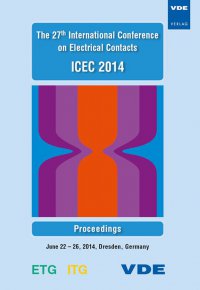Impact of inhomogeneous material description for punched edges on the force-fitting simulation of copper high current connectors
Conference: ICEC 2014 - The 27th International Conference on Electrical Contacts
06/22/2014 - 06/26/2014 at Dresden, Deutschland
Proceedings: ICEC 2014
Pages: 6Language: englishTyp: PDF
Personal VDE Members are entitled to a 10% discount on this title
Authors:
Aristizabal, E.; Guenter, F. (Laser Material Processing and Joining Technology, Robert Bosch GmbH, Schwieberdingen, Germany)
Schaaf, P. (Chair Materials for Electrical Engineering and Electronics, Institute of Materials Engineering and Institute of Micro-and Nanotechnologies, TU Ilmenau, Ilmenau, Germany)
Abstract:
Cold-joined connectors (CJC) are widely used in electrical engineering, owing to the simplicity of the assembly process, the low initial investment, and the possibility to join several contacts in parallel. In addition, heat dissipation and contaminations with flux do not occur in this joining process. The fast-growing number of high current applications in the automotive industry is a strong motivation to make these advantages also suitable for high power contacts. Finite Element (FE) models play an important role in the design of these new cold joined contacts. An FE model offers a deeper understanding of the joining process and the quality of the connectors, making geometrical optimization and a better choice of material possible. The material characterization of the copper parts constitutes new challenges. Due to the hardening behavior of copper, strong changes in flow properties take place during the production process of the assembly parts. Thus, new methods have been developed in order to detect and account for effects such as inhomogeneity at punched edges. On the other hand, the joining process is dominated by friction mechanisms. A new experimental setup and friction models have been developed for a better understanding and control of friction during cold-joining. This paper discusses the impact of a new inhomogeneous material description at punched edges on a general FE description of the cold joining process (CJP). The implementation is carried out in the commercial FE solver ABAQUS. Experimental data of the force-displacement (F-x) progression during the joining process is used as basis for the validation of the simulations. The predictability and general validity of the model has been tested in a broad range of geometry layouts and material combinations.


